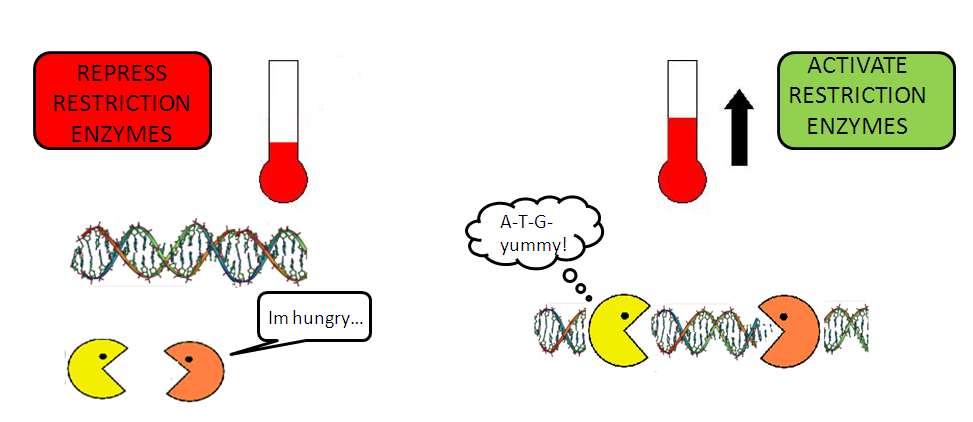Team:Imperial College London/Temporal Control/Thermoinduction
From 2009.igem.org
(→Overview) |
(→Overview) |
||
| Line 9: | Line 9: | ||
Thermoinduction means using a change in temperature to cause a biological change to the system. One way this can be done is by increasing temperatures of the system. Thermal denaturation will occur and this results in a decrease in binding efficiency of the substrate with the enzyme. This will induce the intended biological change. | Thermoinduction means using a change in temperature to cause a biological change to the system. One way this can be done is by increasing temperatures of the system. Thermal denaturation will occur and this results in a decrease in binding efficiency of the substrate with the enzyme. This will induce the intended biological change. | ||
| - | <html><a href="https://2009.igem.org/Team:Imperial_College_London/Temporal_Control/Thermoinduction/System"><img style="vertical-align:bottom;" width= | + | <html><a href="https://2009.igem.org/Team:Imperial_College_London/Temporal_Control/Thermoinduction/System"><img style="vertical-align:bottom;" width=50px align="left" src="http://i691.photobucket.com/albums/vv271/dk806/II09_Learnmore.png"></a></html> <b><i>About the thermoinduction system.</i></b> <br> |
<br> | <br> | ||
Revision as of 13:23, 12 October 2009

Thermoinduction
Overview
This part of temporal control is responsible for triggering genomic deletion, after encapsulation has taken place.
- When the temperature is low, restriction enzymes are inhibited and DNA is protected.
- When the temperature is high, restriction enzymes are produced and DNA is digested.
Thermoinduction means using a change in temperature to cause a biological change to the system. One way this can be done is by increasing temperatures of the system. Thermal denaturation will occur and this results in a decrease in binding efficiency of the substrate with the enzyme. This will induce the intended biological change.
 About the thermoinduction system.
About the thermoinduction system.
Relevance to our project
We made use of thermoinduction in Module 3 – genome deletion.
Thermoinduction is used to start genome deletion when sufficient drug protein of interest has been produced, and encapsulation is complete. Genome deletion is induced by manually raising the temperatures from 28°C to 42°C. In our case, we have used BBa_K098995 (Harvard 2008). This BioBrick consists of the heat sensitive cI857 with a strong promoter. This temperature sensitive cI857 protein repressor, has a significantly decreased binding efficiency with the cI promoter between 35°C to 42°C. This would cause de-repression of the pLambda promoter. Restriction enzymes DpnII and TaqI will be produced. They are the ones who carry out DNA restriction, and cause cell death.
Temporal Control: Thermoinduction






 "
"





